|
|
|
 |
| |
|
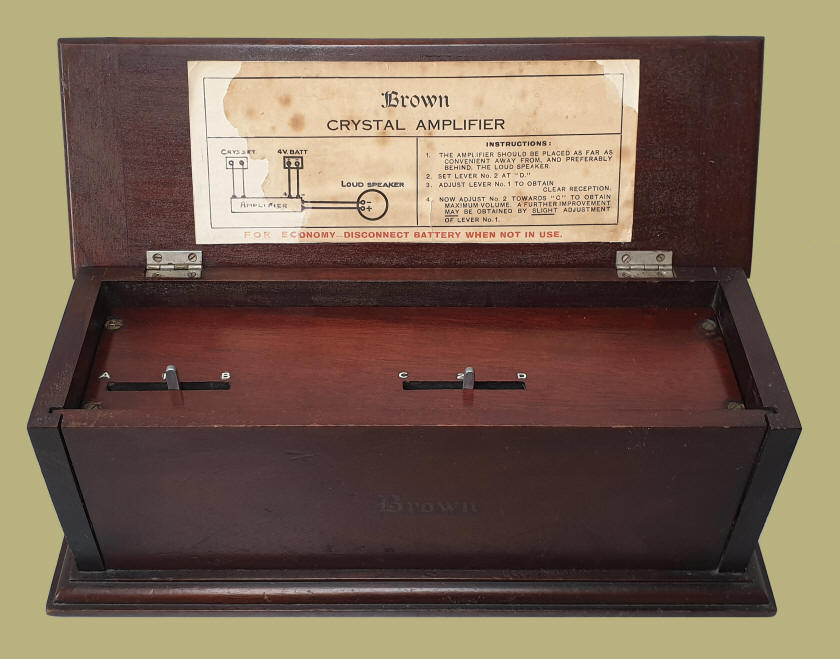 |
|
Double electromechanical amplifier
("carbon amplifier") |
|
In a mahogany box with a lid.
Connections for input, output and battery voltage are
provided at the rear and right.
On the inside of the lid is a diagram with short
instructions for use.
The dual system amplifies the signal from a crystal
receiver, so that a horn loudspeaker can be usd.
The power gain is about 1000 times.
Maximum output power is around 0.3 Watt.
The frequency range is up to
approximately 1800 Hz. |
|
Under the wooden lid are two levers, AB
and CD.
The pre-amplifier is set with the left lever, the power
amplifier with the right lever.
Both amplifiers are set as a balance amplifier, to
prevent saturation of the iron cores of the coils.
The input signal is fed through two connections to a
coil, causing a metal rod ("reed") to vibrate in rhythm
with the sound signal.
The rod is connected to a carbon microphone that is
connected to a 6 volt battery.
The current is amplified by this and then
fed back into a second system, whereby the current is
additionally amplified and fed to a connected horn
loudspeaker via a matching transformer. |
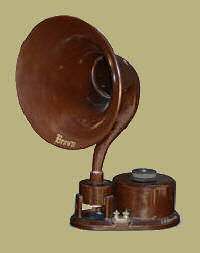 |
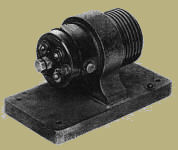 |
The carbon amplifier was invented in 1904
by Bell engineer Herbert E. Shreeve.
He used the system (photo left) to
amplify telephone signals between New York and Chicago. |
|
The sound that would be obtained with
this type of amplifier is advertised as "pure and
undistorted".
The truth is, the system was pretty scrambled,
but it was cheaper than a tube amp. |
In 1923 Brown introduced the
Microphone Amplifier for single amplification
and a speaker where the system was incorporated, the
"Crystavox" (photo right).
|
|
Sidney George Brown (1873-1948) was a
prolific inventor of electromechanical devices,
including the well-known “A” headphones, the “Microphone
Amplifier” and a gyrocompass.
The company made loudspeakers and for a short time also
radios.
In 1906 he founded Telegraph Condenser Co and in 1910 he
started a company under his own name, S.G.
Brown Ltd., in Watford (north of London).
Later he also had a business in North Acton, London W3.
S.G.
Brown Ltd.
later became part of Racal, which again
became part of Thales-Racal Acoustics. |
|
Data |
| Serieal number: |
None |
| Dimensions: |
33.5 x 12.5 x 12.5 cm |
| Made in: |
1926 |
| Purchased in: |
2011 |
| Sold in: |
2024 |
| DC resistance:
|
2000 ohms |
| Weight: |
1.9 kg |
| Original price: |
£ 1.4.0, later 44 Shilling |
| |
|
In the same year, 1926, New
Wilson Electrical Manufacturing Co., Ltd., 18
Fitzroy Street, Euston Road, London W1,
also introduced a carbon
amplifier, the
Microphone Bar Amplifier for single
amplification (photo opposite). |
|
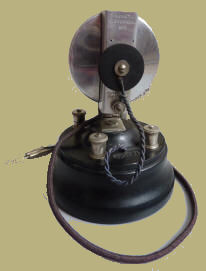 |
|
|
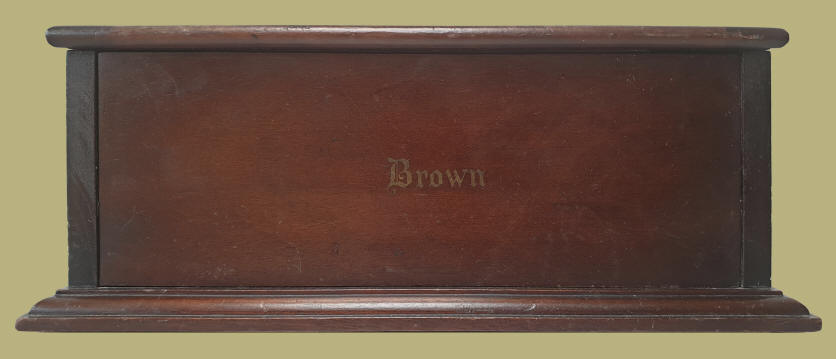 |
|
Front |
 |
|
Front view and detail of the system |
|
Left and center the two amplifiers, right
the matching transformer and a loudspeaker capacitor. |
|
 |
|
Advertisement in Popular Wireless, January 15,
1927 |
|
|